Hydrologic Cycle and Earth's Systems Overview
1/43
There's no tags or description
Looks like no tags are added yet.
Name | Mastery | Learn | Test | Matching | Spaced |
|---|
No study sessions yet.
44 Terms
Hydrologic cycle
Water moves between oceans, atmosphere, glaciers, rivers, groundwater, plants, and animals through processes like evaporation, precipitation, infiltration, runoff, and transpiration.
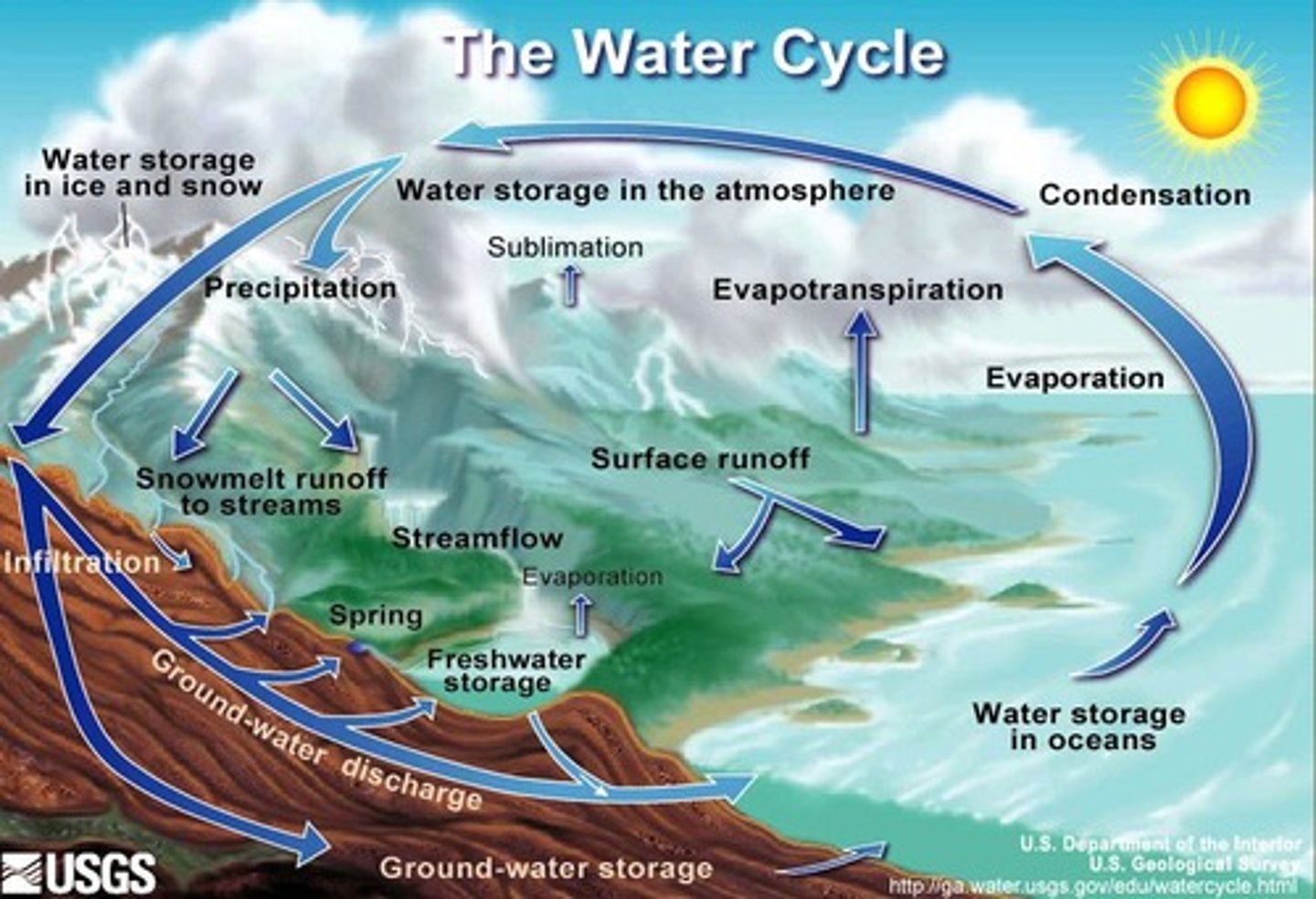
Water distribution on Earth
Oceans (97%), glaciers/ice caps (2%), groundwater (0.6%), surface water (0.01%), atmosphere (0.001%).
Stream discharge calculation
Discharge = cross-sectional area × velocity. It's important for flood prediction and water resource management.
Hydrograph
Rising limb (increasing discharge), peak flow, falling limb (decreasing discharge).
Stream flow characteristics downstream
Channel becomes wider and deeper; flow becomes faster; sediment size becomes smaller.
Stream channel changes over time
Through erosion and deposition — meanders migrate, oxbow lakes can form.
Velocity, erosion, and deposition around a meander
Fastest flow and erosion on the outer bend; deposition on the inner bend.
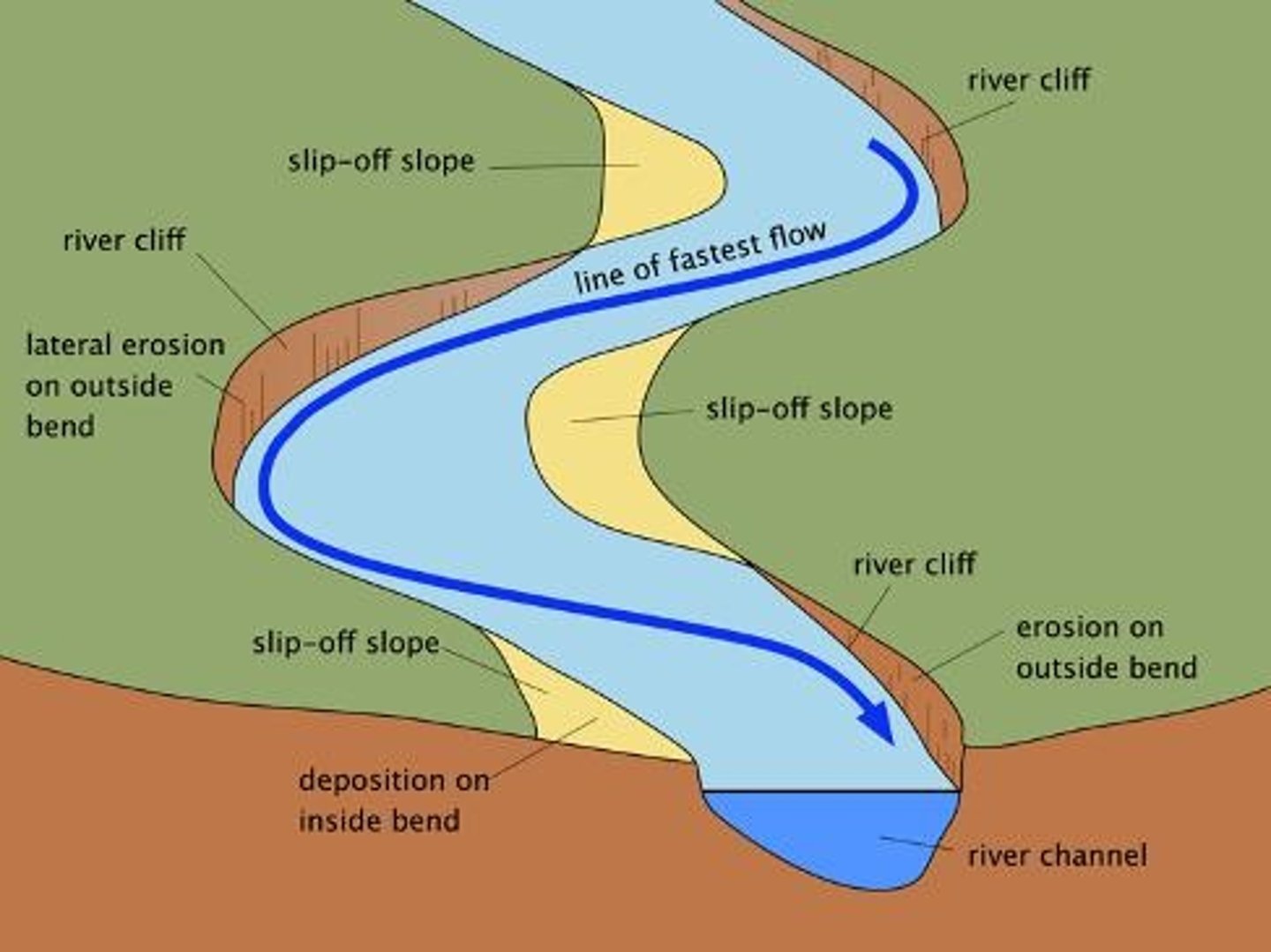
Braided vs meandering streams
Braided = multiple channels, coarse sediment, variable flow. Meandering = single, winding channel, fine sediment.
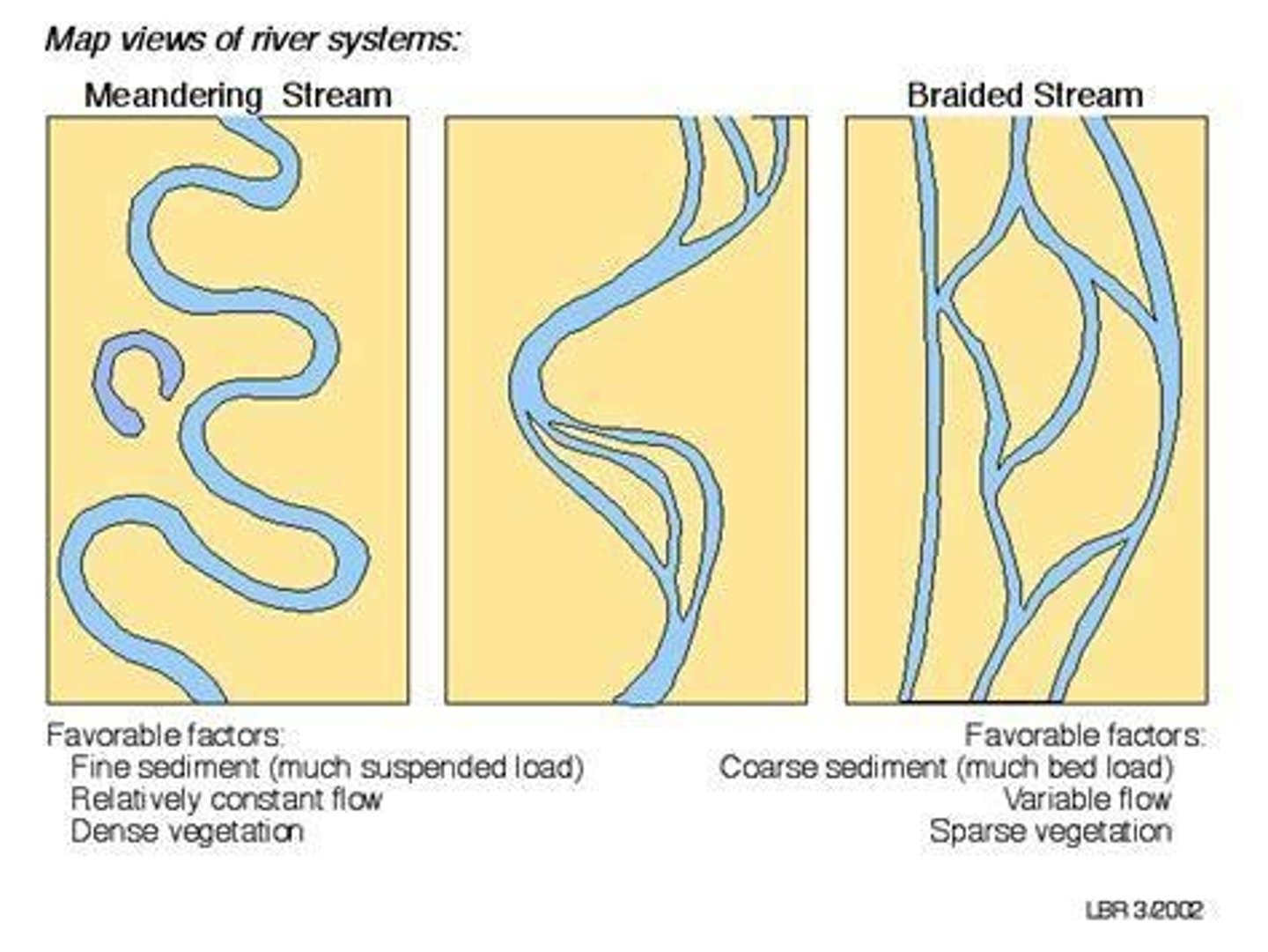
Flood prevention methods
Levees, dams, floodplain zoning, and early warning systems.
Porosity
% of open space in a material.
Permeability
Ability to transmit water.
Porosity and permeability by material
Sands/gravel = high both. Clays = high porosity but low permeability.
Water table
The top of the saturated groundwater zone.
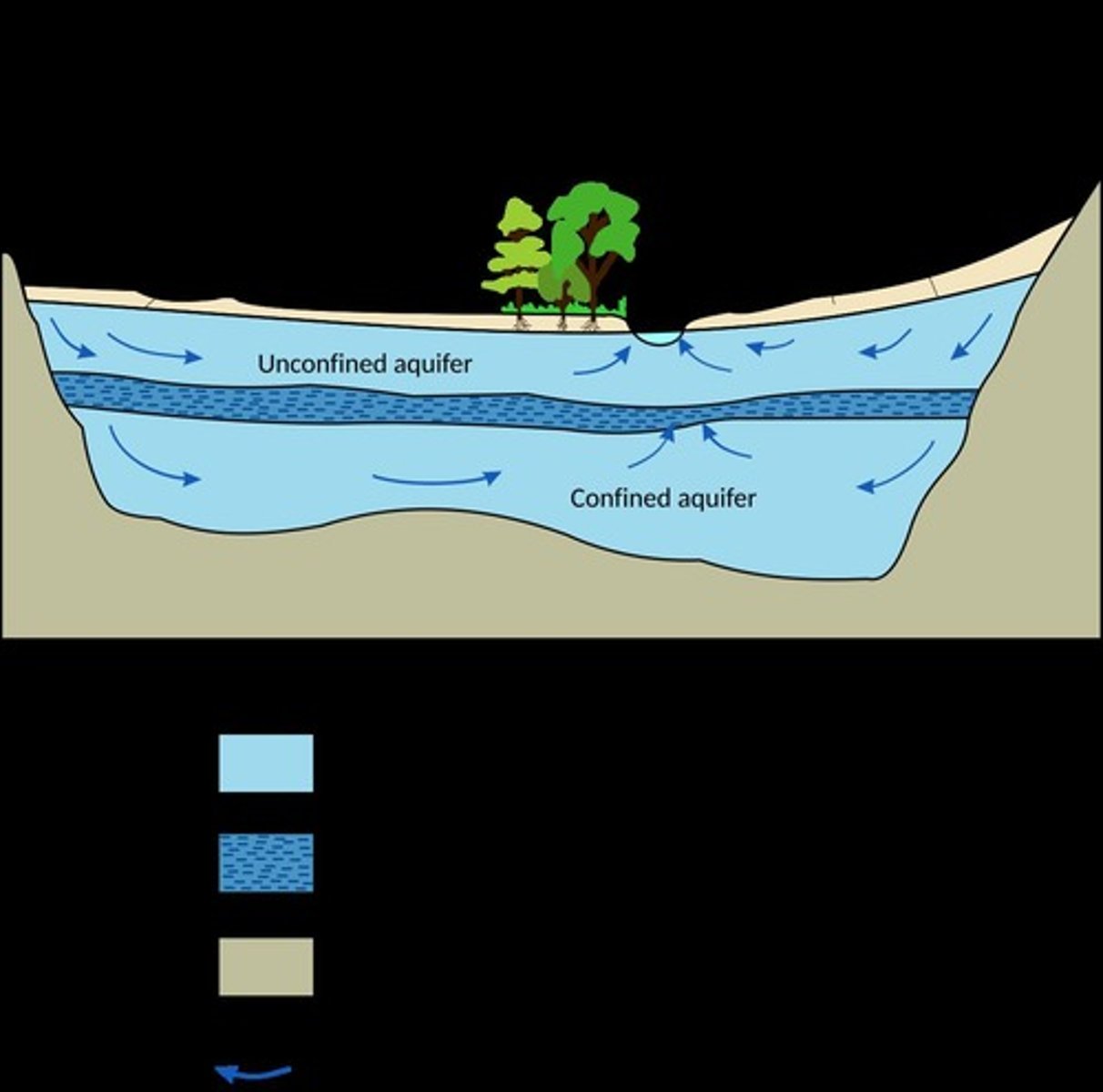
Groundwater system entry and exit
Enters through infiltration. Leaves via springs or pumping wells.
Groundwater flow and pollution
It flows from high to low pressure; pollutants travel along groundwater flow lines.
Formation of oil and gas
Organic material buried under sediment is heated and compressed over millions of years.
Oil and gas reserves
In porous reservoir rocks capped by impermeable layers.
Formation of coal
From compressed swamp plants buried under sediment layers.
Non-fossil fuel energy sources
Solar, wind, hydroelectric, geothermal, nuclear.
Electricity generation
By spinning turbines that turn generators.
Main energy source for electricity in the U.S.
Natural gas.
Greenhouse gases
Greenhouse gases trap infrared radiation, warming Earth.
Climate models
Continued warming, sea-level rise, more extreme weather — depending on emissions.
Ways to reduce warming
Use renewable energy, capture carbon, plant trees, increase efficiency.
Earth's compositional layers
Crust, mantle, outer core (liquid), inner core (solid).
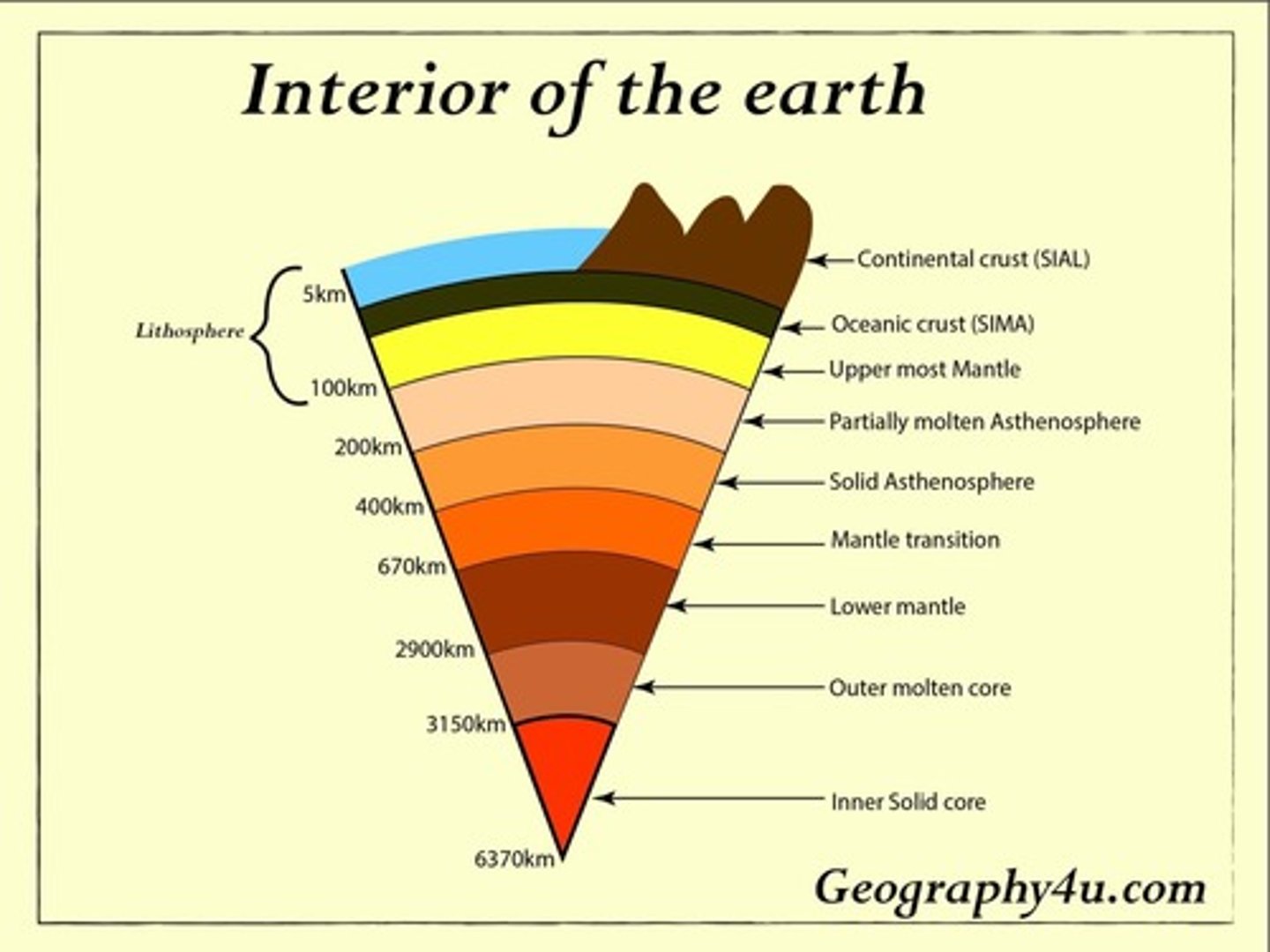
Plate tectonics
Earth's lithosphere is broken into moving plates floating over the asthenosphere.
Geologic processes at plate boundaries
Divergent: plates pull apart (seafloor spreading), Convergent: plates collide (mountains, volcanoes), Transform: plates slide past (earthquakes).
Observations
Something you notice or measure.
Hypothesis
Testable idea to explain observation.
Prediction
What will happen if the hypothesis is correct.
Element
One type of atom.
Compound
Chemically bonded elements.
Mineral
Naturally occurring crystal structure.
Rock
Aggregated minerals.
Volcanic and plutonic rocks
Felsic: Granite (plutonic), Rhyolite (volcanic); Mafic: Gabbro (plutonic), Basalt (volcanic).
Types of magma formation
Mid-ocean ridge: Decompression melting; Subduction zone: Water-lowered melting point; Hotspot: Mantle plumes.
Types of sedimentary rocks
Clastic = Sandstone; Chemical = Rock salt; Biochemical = Limestone.
Earthquake hazards
Ground shaking, landslides, liquefaction, tsunamis, aftershocks.
Magma viscosity controls
High silica = thicker magma; High temperature = runnier magma.
Predicting volcanic eruptions
Monitor earthquakes, ground deformation, and gas emissions.
Earth's uniqueness for life
Presence of liquid water, atmosphere, magnetic field, and plate tectonics.
Atmospheric composition and climate
Greenhouse gases trap solar heat.
Factors influencing global temperatures
Greenhouse gases, solar variability, volcanic activity, ocean currents.
Climate proxies
Ice cores show past atmospheric gases; Tree rings show growth related to climate; Ocean sediments show temperature patterns.